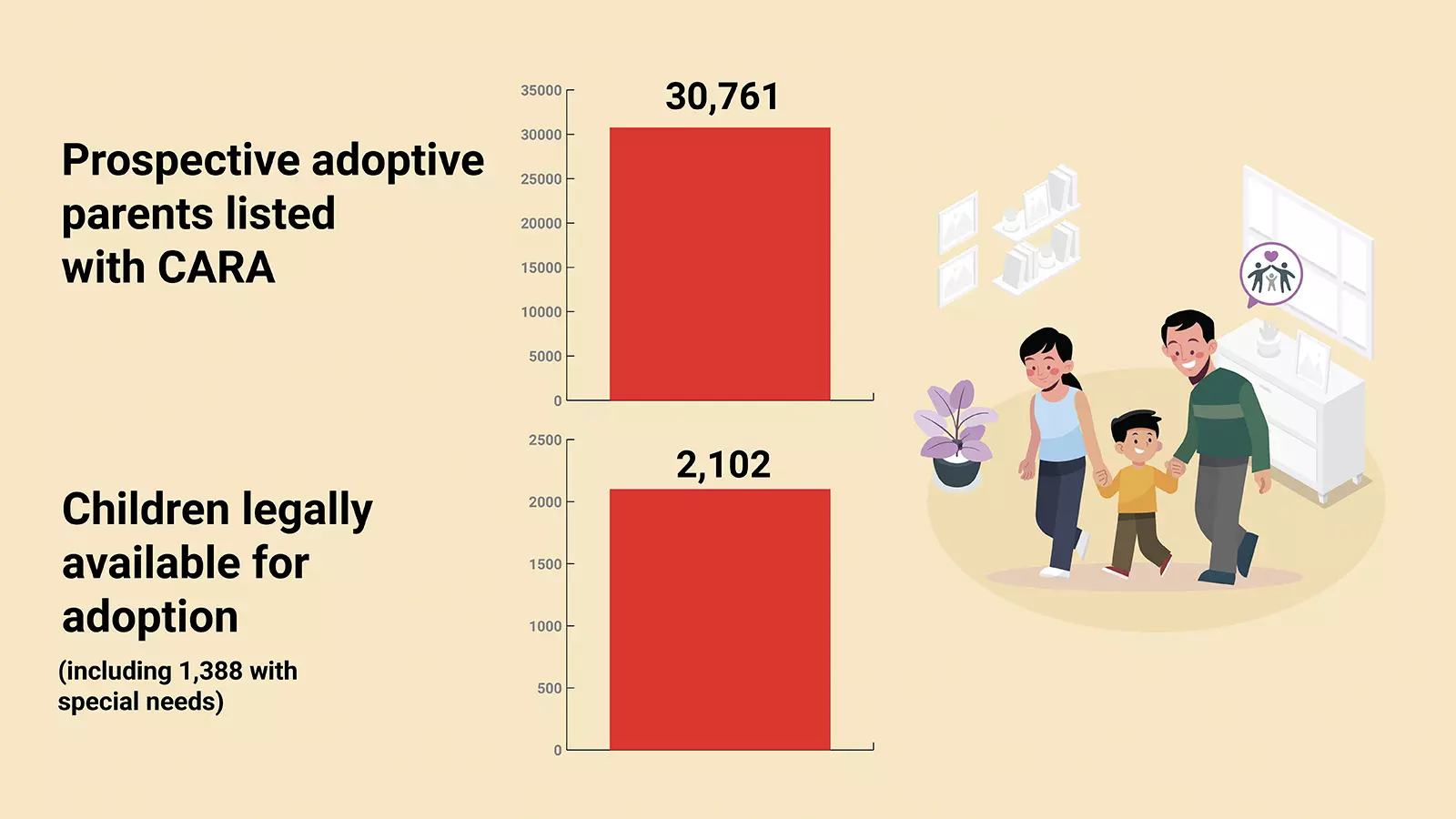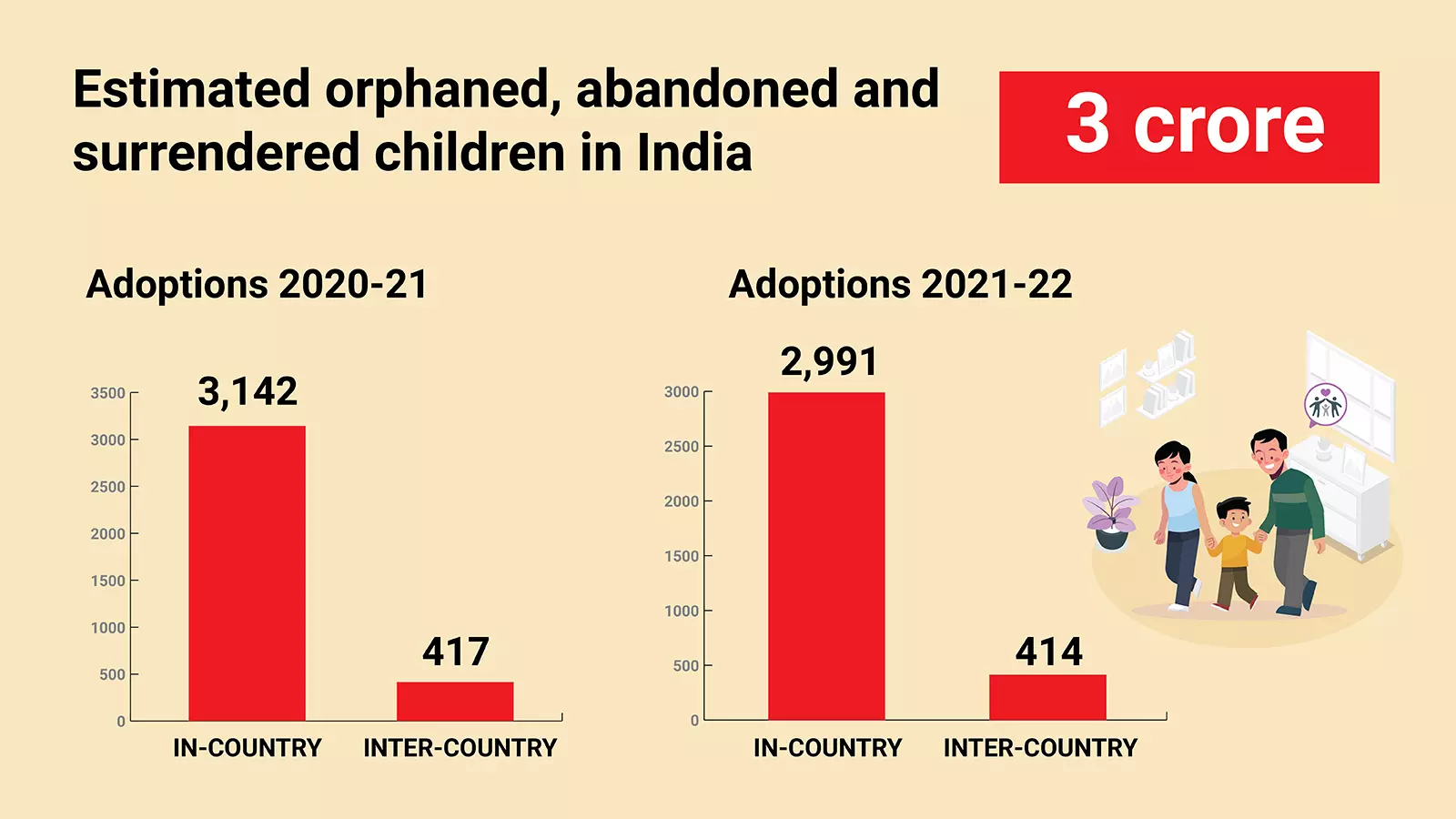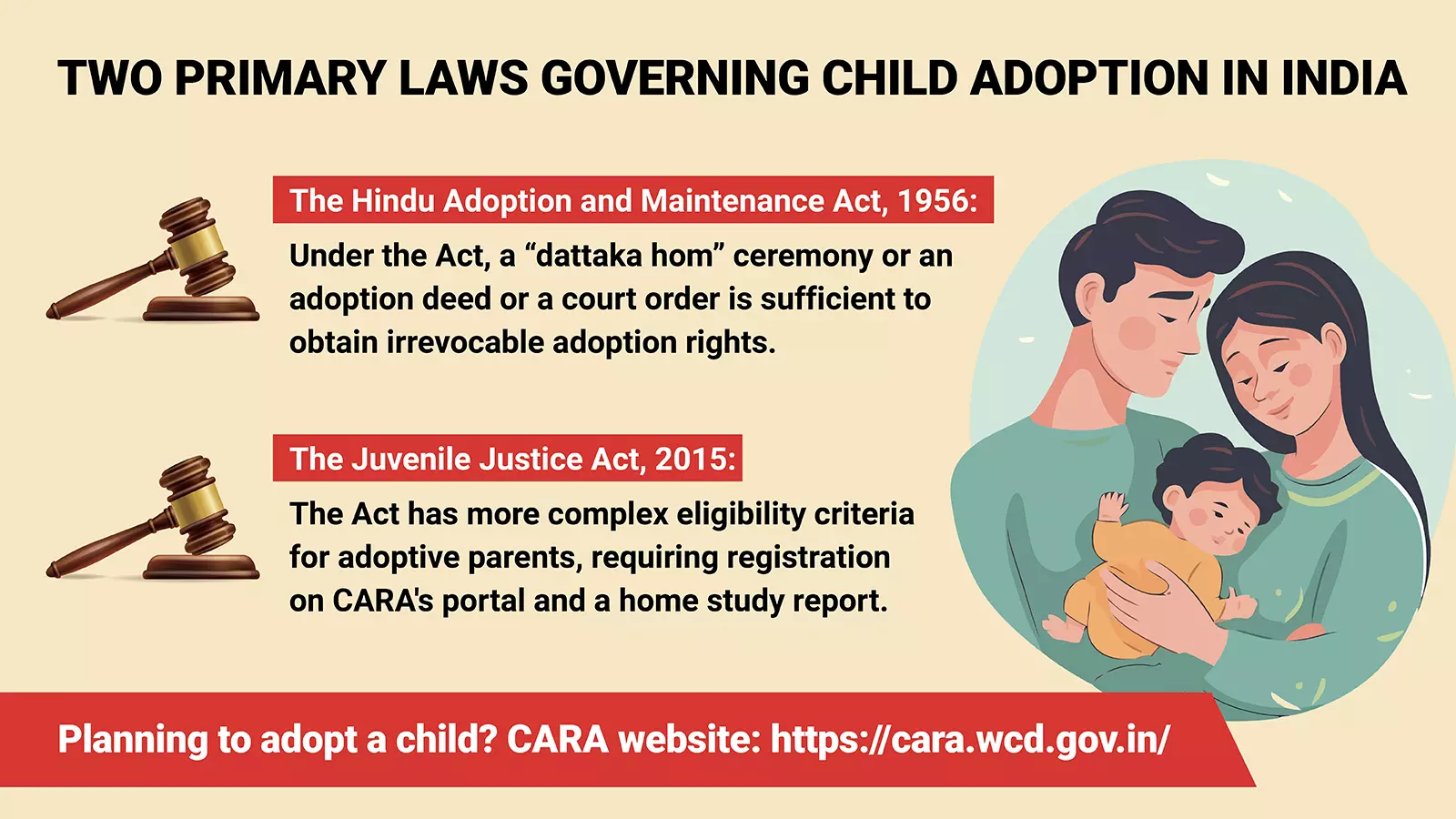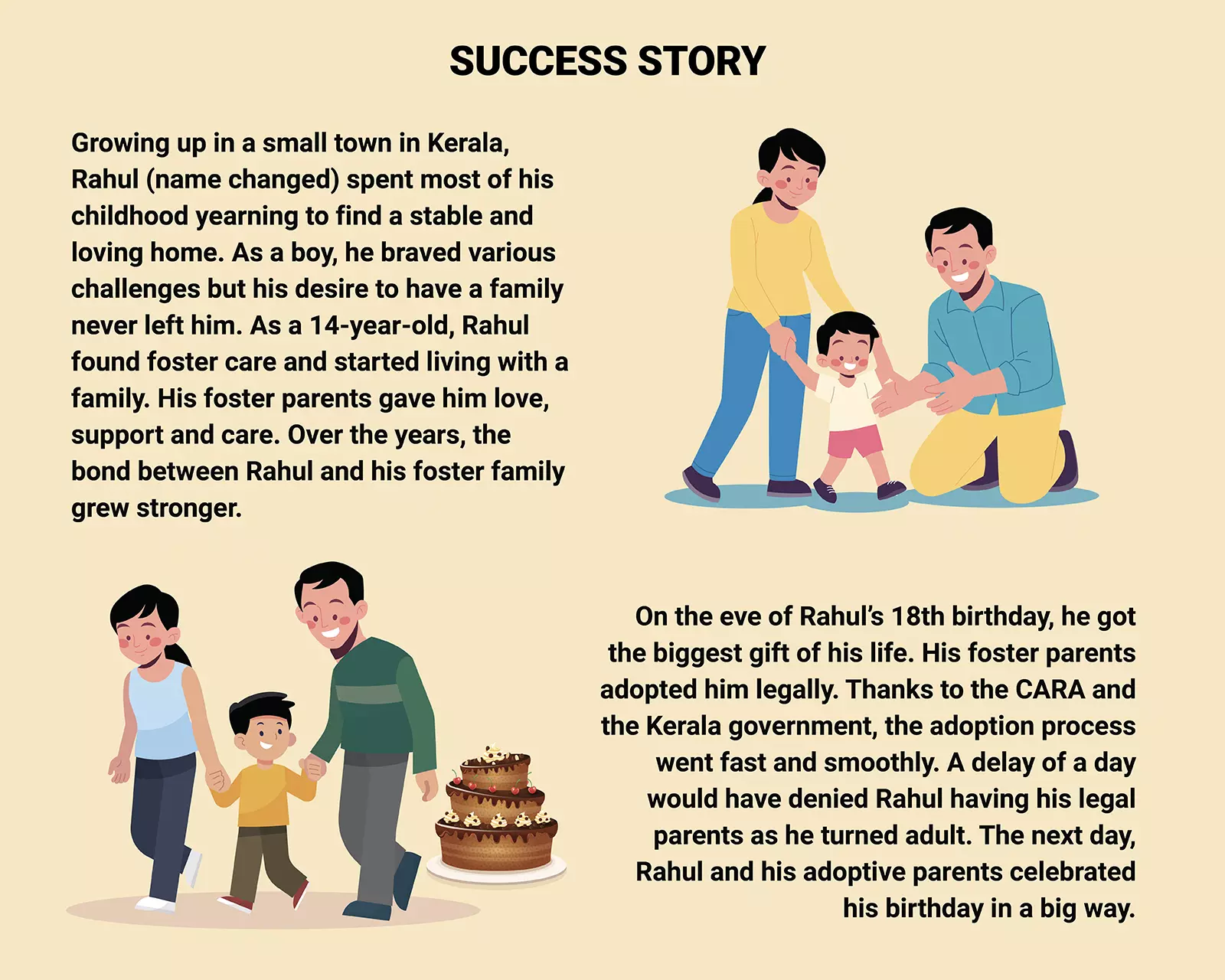
- Home
- India
- World
- Premium
- THE FEDERAL SPECIAL
- Analysis
- States
- Perspective
- Videos
- Sports
- Education
- Entertainment
- Elections
- Features
- Health
- Business
- Series
- In memoriam: Sheikh Mujibur Rahman
- Bishnoi's Men
- NEET TANGLE
- Economy Series
- Earth Day
- Kashmir’s Frozen Turbulence
- India@75
- The legend of Ramjanmabhoomi
- Liberalisation@30
- How to tame a dragon
- Celebrating biodiversity
- Farm Matters
- 50 days of solitude
- Bringing Migrants Home
- Budget 2020
- Jharkhand Votes
- The Federal Investigates
- The Federal Impact
- Vanishing Sand
- Gandhi @ 150
- Andhra Today
- Field report
- Operation Gulmarg
- Pandemic @1 Mn in India
- The Federal Year-End
- The Zero Year
- Science
- Brand studio
- Newsletter
- Elections 2024
- Events
The exhaustive road to adoption: How prospective parents navigate the journey with mixed feelings

In early 2021, Aditi (name changed), an English teacher at University of Delhi, and her husband decided to adopt a child. The couple didn’t have a biological child and had been toying with the idea of adoption for a long time.As required, the couple registered themselves as prospective adoptive parents with the Central Adoption Resource Authority, or CARA, online.The CARA is a statutory...
In early 2021, Aditi (name changed), an English teacher at University of Delhi, and her husband decided to adopt a child. The couple didn’t have a biological child and had been toying with the idea of adoption for a long time.
As required, the couple registered themselves as prospective adoptive parents with the Central Adoption Resource Authority, or CARA, online.
The CARA is a statutory body under the Ministry of Women and Child Development. It is through the CARA and its associated and recognised adoption agencies that “orphan, abandoned and surrendered” children are given for adoption. The CARA makes rules and regulations for in-country and inter-country adoptions. It also monitors all the processes involving adoption.

After registration and selection of a Specialised Adoption Agency, or SAA, closest to their residence, members of the District Children Protection Unit, or DCPU, visited the couple’s house for verification. In the “home study report” of the CARA, Aditi and her husband were “deemed fit to adopt a child”.
The couple was declared physically, mentally, emotionally and financially capable of adopting and raising a child. Moreover, they didn’t have any life-threatening diseases nor were they ever convicted in any criminal case.

These are some criteria, including consent of both spouses to adopt a child and at least two years of stable marital relationship, for a couple to be eligible to become prospective adoptive parents.
The CARA guidelines also state that any prospective adoptive parents, irrespective of gender, marital status and whether they have a biological son or daughter, can adopt a child.
“Till then everything went smoothly. All the procedures beginning from registration to the home visit of officials happened within three months. Our documents were approved and we became eligible for parenthood,” Aditi told The Federal.
After the initial euphoria, Aditi's “endless wait” began. “It has been more than two years and we don’t know when our wait will end,” Aditi lamented.
Aditi is one among 30,761 prospective adoptive parents from the country listed with the CARA. They all wish to get custody of their adopted children at the earliest. However, only 2,102 (including 1,388 with special needs) children are legally available for adoption, according to figures culled from the CARA website on December 8 by The Federal.
Long wait
Experts say a would-be parent typically waits at least three years to bring home a child.
“The period of waiting is long because of the very few children legally available for adoption. Also, 80 per cent of the prospective adoptive parents want to adopt children in the 0-2 age group,” said Sindhu Naik, member of Adoption Scrutiny, Karnataka State Council for Child Welfare.

Echoing Naik, Diba Roy, founder of Nivedita Nari Sangstha, an NGO working for underprivileged children and women in Silchar, Assam, said, “Most often people want to adopt infants. Older children (over six years) grow up in Child Care Institutions, or CCIs, without ever finding a home.” The NGO also runs a SAA under the CARA.
But why, in a vast country like India, where there are an estimated 3 crore orphan, abandoned and surrendered children, only a few thousand get adopted every year? During the coronavirus pandemic alone, around 1.5 lakh children became orphans.
According to CARA figures, a total of 3,142 (in-country) and 417 (inter-country) adoptions took place in 2020-21 and 2,991 (in-country) and 414 (inter-country) adoptions took place in 2021-2022.
“The adoption numbers are indeed very small,” said Naik. “The authorities must do due diligence to trace the biological family/legal guardians before declaring a child legally free for adoption,” she added.
The current timeline to trace the biological family of an abandoned child below two years is two months and above two years is four months. For a child who is surrendered, it is two months.
Various agencies including the police, health department, Child Welfare Committee (CWC), SAA, DCPU and CCI are involved in declaring a child legally free for adoption. These organisations follow various sections, rules and regulations related to the Juvenile Justice (Care and Protection of Children) Act, 2015 (amended in 2021); Juvenile Justice (Care and Protection of Children) Model Rules, 2016 (amended in 2022); and Adoption Regulations 2022.
The bottlenecks
There are several bottlenecks to declaring a child legally free for adoption. For one, there is often a delay in the DNA report of children born out of rape and surrendered by mothers (including minors).
In the case of children above six years left behind by poor migrant parents in the care of shelter homes, institutions prefer to wait for the parents to return and take their children back.
The procedure for declaring children of parents with mental health issues as legally free for adoption takes time. A medical board must be constituted to examine the mental health of parents before any decision can be taken.
One important aspect regarding the minuscule number of children legally free for adoption is that the majority of abandoned children are bereft of institutional care. Out of around 30 million abandoned children, only 261,000 stay in CCIs. Moreover, an estimated 8,000 CCIs are not registered under the CARA and so these places don’t have the right to give children away for adoption.
Child rights experts fear that because of these gaps, trafficking of children is going on unabated and many people are adopting children illegally.
‘A great delay’
The Supreme Court flagged the delays in the adoption process in October while hearing two pleas, including one seeking to simplify the legal process for child adoption in India, from petitioners who say the process has virtually come to a standstill.
“There is a great delay which is taking place in this,” said the bench headed by Chief Justice of India (CJI) DY Chandrachud. “Why are they (the CARA) stalling adoptions?... Hundreds of children are awaiting adoption in the hope of a better life,” the CJI observed.
Dipanita Mondal, a homemaker from Kolkata, who is a prospective adoptive parent, said a three- to four-year waiting period is likely to affect the position of parents and the child to be adopted.
“The wait is long and frustrating. I have undergone mixed feelings in the last two years since we applied for adoption. My husband and I doubted our decision on several occasions but we are standing firm because we want to complete our family by adopting a child. But it is not easy, as we both will turn 40 soon,” said Mondal.
The wait has a social, emotional and financial impact on the prospective adoptive parents.
Experts say a married couple usually goes for adoption after they fail to have a biological child. Sometimes, couples also adopt because of altruistic reasons to provide a home and family to a needy child.
“By the time a man and his wife decide to go for adoption, they are usually in their mid or late-thirties. If they have to wait for three or more years, then by the time they become adoptive parents they will be in their forties. Thus, counselling is mandatory for would-be parents to cope with various challenges,” said Nagasimha Rao, an adoption adviser and child rights activist from Bengaluru.

Experts say due to a double-digit increase in infertility, which affects around 15 per cent of Indian couples, demand for adoption has also grown. According to the Indian Society of Assisted Reproduction, India is home to as many as 27.5 million infertile people—both men and women.
Rao said that a lot of single people, mostly financially independent women, are choosing to adopt kids. “The decision to adopt a child should not be based on emotion. All pros and cons should be looked into by a person before going for adoption.”
